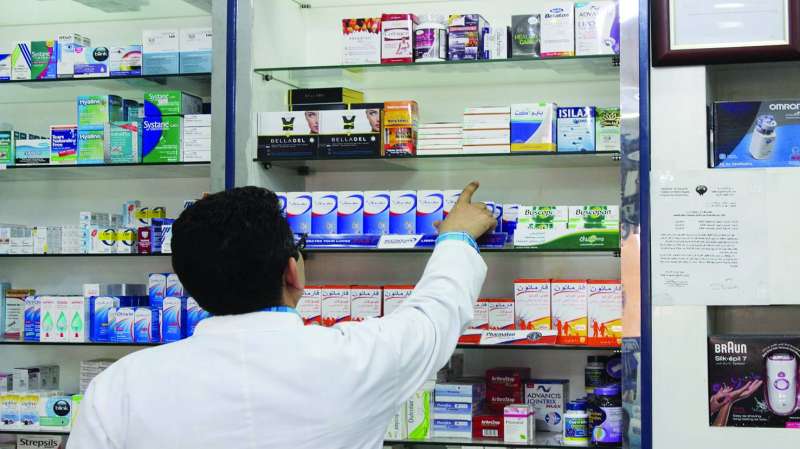While efforts continue to Kuwaitize many jobs and professions, statistics indicate that “Kuwaitization of the pharmacy sector follows in the footsteps of other medical professions, and may be far-fetched and will have to wait years for various reasons.”
The numbers show that there are about 1,170 Kuwaiti pharmacists in the government sector, compared to about 1,555 non-Kuwaitis, while the gap widens in the private health sector, bringing the number of non-Kuwaiti pharmacists to more than 2,950, compared to only 420 Kuwaitis.
In the context of the nationalization of this sector, health sources confirmed to Al-Rai that “several measures have been taken in this regard, to increase reliance on national elements, most notably the approval of Law 30/2016, in issuing a license to open a pharmacy for Kuwaiti pharmacists, and private hospitals of no less than the number of 50 beds, and to run a pharmacy in cooperative societies, provided that the license is issued in the name of a Kuwaiti pharmacist.
The sources also pointed out that “among the measures taken are also the formation of a committee to study the practice of the profession, reconsider the law regulating the profession, and give Kuwaiti pharmacists the opportunity to work and compete in the private sector, in addition to reconsidering the decision on applications for a license to open pharmacies to only Kuwaiti pharmacists, and we pledge not lease or sell the license to an expat, in addition to moving towards including the specialty of pharmacy within the programs of the Kuwait Institute for Medical Specialties, and granting greater opportunities to send qualified national pharmacists to complete their further studies.”
In exchange for these positive steps, the sources confirmed that “the need for pharmacists from abroad will continue, like other medical professions, for reasons most notably the limited number of Kuwaiti pharmacist graduates, the expansion of government and private health services, the successive opening of health projects, and the need to appoint pharmacists. In addition to the establishment of a clinical pharmacy unit in hospitals and specialized centers, there is a need for pharmacists specialized in this field.”
Returning to the pharmacists’ numbers, the sources indicated that “the gap is still wide between the national elements, which number about 1,590 pharmacists in the government and private sectors, compared to 4,505 non-Kuwaitis, which means that the percentage of Kuwaiti pharmacists constitutes only about 26 percent of the total number of pharmacists.
Regarding the workforce in the government sector, the sources explained that “the percentage of Kuwaiti pharmacists constitutes less than 43 percent, compared to more than 57 percent of non-Kuwaiti pharmacists.”
Regarding the workforce in the private sector, the sources pointed out that “the gap is large, as the number of national personnel working there is about 420 pharmacists, compared to more than 2,950 non-Kuwaitis, which means that the percentage of Kuwaiti pharmacists in this sector is about 12 percent” compared to about 88 percent of non-Kuwaitis.
The sources attributed the increase in the gap in this sector to the low salary paid to most non-Kuwaiti pharmacists, compared to national employees, considering that this is one of the main aspects that pharmacy owners consider, as this constitutes a difference in terms of the pharmacy’s operational expenses.
5 reasons preventing the Kuwaitization of the sector
— The limited number of Kuwaiti graduates
— The expansion of government and private health services
— The successive opening of health projects
— The creation of a clinical pharmacy unit in hospitals and specialized centers
— The decline in the salary rate of most non-Kuwaiti pharmacists in the private sector

